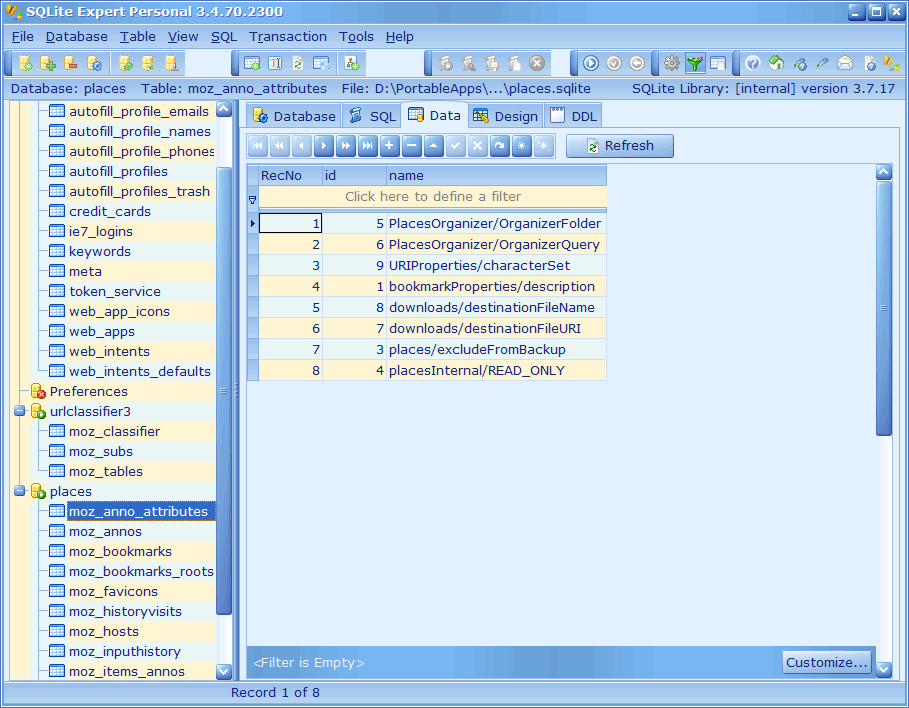
- SQLITESTUDIO EXPORT TABLES TO OTHER DATABASES DOWNLOAD
- SQLITESTUDIO EXPORT TABLES TO OTHER DATABASES WINDOWS
However, if you do the same in the ‘Database Structure’ menu you will be given a set of possible actions. If you right click on a table name in the ‘DB Schema’ pane, nothing happens. The ‘Database Structure’ tab on the left allows you to initiate actions on the tables. In particular what tables are in the database and the fields and their types which are in each table. However the ‘DB Schema’ pane is only there to allow you to see the details of the schema for the tables. When you open the database, the ‘Database Structure’ tab on the left and the ‘DB Schema’ pane on the right will look very similar. Navigate to where you have stored the database file on your local machine, select it and click open.Click on the ‘open database’ button in the toolbar.To open the database in DB Browser do the following
SQLITESTUDIO EXPORT TABLES TO OTHER DATABASES DOWNLOAD
If you do not already have a copy of this database you can download it from here. Opening a databaseįor this lesson we will be making extensive use of the SQL_SAFI database. You can now close the preference window by clicking OK. We will discuss the meaning of NULL values in a table in a later episode. This is now the default background cell colour that will be used to display NULL values in you tables. A colour selector window will open, select Red. Click in the area for the Background color for NULL. You will see three bars below the word Text, to the right there are in fact three invisible bars for the Background. Towards the bottom there is a section dealing with Field colors.

In general we will see how each of these are used as we go through the lesson with the exception of the Edit Pragmas tab which deals with system wide parameters which we won’t want to change. Initially these will be quite empty as we haven’t created or opened a database yet. The initial screen of DB Browser will look something like this, the panes may be in a different configuration Ī small menu system consisting of File, Edit, View and Help.īelow the menu system is a toolbar with four options New Database, Open Database, Write Changes and Revert Changes.īelow the toolbar is a 4-tabbed pane for Database Structure, Browse Data, Edit Pragmas and Execute SQL.
SQLITESTUDIO EXPORT TABLES TO OTHER DATABASES WINDOWS
To explicitly launch the application after installing it, use the windows button (bottom left of screen) and type in ‘DB Browser’ in the search bar and selecting the application when it appears. In Windows the installation of DB Browser does not create a desktop icon.


Understand the layout of the DB Browser for SQLite and the key facilities that it provides


 0 kommentar(er)
0 kommentar(er)
